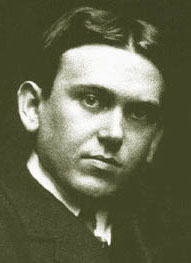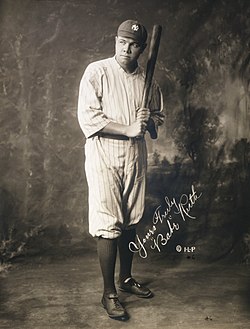History
18th century

German immigrants began to settle along the Chesapeake Bay by 1723, living in the area that became Baltimore when the city was established in 1729. [9] German Lutheran immigrants established Zion Lutheran Church in 1755, which also attracted Pennsylvania Dutch settlers to the region. Early German settlers also established the German Society of Maryland in 1783 in order to assist German immigrants. [10]
19th century



Following the War of 1812 in North America, a wave of German immigrants came from the Palatinate, Hesse, Bavaria, and Bohemia. Many fled from Germany between 1812 and 1814, during the War of the Sixth Coalition, (1812–1814), the last of the series of French Revolutionary Wars and the Napoleonic Wars, in order to avoid military conscription into the Royal Prussian Army. The port of Baltimore was developed as a gateway for immigrants during the 1820s, and soon became the second largest gateway to America after New York City, (and Ellis Island), especially at the terminals of the Baltimore and Ohio Railroad on Locust Point, Baltimore, which had made an agreement with the Norddeutscher Lloyd (North German Lloyd Line). By 1850, 20,000 German-born people lived in the city. Between 1820 and 1860, Germans were the largest group of immigrants to Baltimore. [12] This wave of immigrants created numerous German institutions, including banks, insurance companies, and newspapers. [13] German immigrants also created a thriving German-language press, including publications such as the Baltimore Wecker (Baltimore Alarm).
During the 1700s and 1800s, many states in the United States allowed non-citizens to vote. Anti-German Catholic and anti-Irish Catholic sentiment following the War of 1812 and intensifying again in the 1840s lead many states, particularly in the Northeast, to amend their constitutions to prohibit non-citizens from voting. Non-citizen voting was banned by the Maryland Constitution of 1851. [14]
Immigration from Germany increased again after the various Revolutions of 1848 flaring up throughout Europe, bringing thousands of "Forty-Eighters" to Baltimore. By the time of the American Civil War, there were 32,613 German-born residents of Baltimore, not counting their American-born descendants of first generation along with the earlier wave of colonial and pre-revolutionary era settlers. Many German immigrants were politically active in opposing slavery, and German newspapers that editorialized against it were targets of attacks by nativists and Confederate sympathizers. [15] During the Baltimore riot of 1861, the office of the Baltimore Wecker was destroyed by mobs; the publisher, William Schnauffer, and the editor, Wilhelm Rapp, left the city due to the violence. The population continued to surge after the Civil War, due in large part to the agreement signed on January 21, 1867, between the Baltimore and Ohio Railroad and the Norddeutscher Lloyd, a German steamship line which brought tobacco along with further German immigrants to the port of Baltimore from Bremen, Germany. German immigrants disembarked from the steamships at B&O's pier, which was located in Locust Point. [16] By 1868, one-fourth of Baltimore's 160,000 white inhabitants were German-born and half of the remainder were of full or partial German descent. [17]
Many of the German immigrants who arrived during the latter half of the 19th century were affluent German Jews [18] who created a number of cultural institutions, including Yiddish theatres such as the Concordia Hall and the Convention Hall Theater. Beginning in the 1870s, many wealthy German Jews built lavish homes in the northwest area of the growing city along North Eutaw Street and Eutaw Place towards the new Druid Hill Park of 1860. They also built several synagogues, such as the Eutaw Place Temple. By 1880, there were around 10,000 German Jews living in Baltimore, most of whom were of Bavarian and Hessian descent. [19]
The German-born immigrant population in Baltimore peaked in 1890, when German-born Baltimoreans numbered 41,930 out of the total population of 365,863. [20]
Holy Cross Church on West Street off Light Street in old South Baltimore near Federal Hill was founded in 1860 to serve the growing numbers of Germans moving onto the peninsula south of "The Basin" of the Patapsco River's Northwest Branch and the Baltimore Harbor, which had been annexed into the city in 1816. St. Elizabeth of Hungary Roman Catholic was later founded in 1895 in Highlandtown in east Baltimore to serve the German immigrant community in that part of the city. [21]
20th century
In the year 1900, the city's German population was 34,000, according to the United States Census. Around 1900 there were over 30 congregations in Baltimore that were holding Sunday services in German. [22] By 1914, the number had risen to 94,000, 20% of city's population. During the 19th Century, many of the city's public schools were known as "German-English". By the 1920s, one third of Baltimore's public schools still offered German-language curricula and a quarter of Baltimoreans could still speak German fluently. [9] Up until World War I the notes from the Baltimore City Council were published in both German and English.
Before and during World War II, many Jewish refugees fled from Germany to Baltimore. By the end of the War they numbered 3,000. [23]
Holy Cross Roman Catholic Church, in the Federal Hill neighborhood, was listed as a German parish until 1959. The church had historically played an important institutional role for South Baltimore's large German community. [24]
The last German-language publication in Baltimore, the Baltimore Correspondent (formerly Der Deutsche Correspondent ), finally ceased publication in 1976. [25]
21st century
Aspects of Baltimore's German heritage remain, such as the Zion Lutheran Church. The church has held services in both English and German for over 250 years. There is also an annual Maryland German Festival held in the Baltimore area, which is sponsored by the German-American Citizens Association of Maryland.



